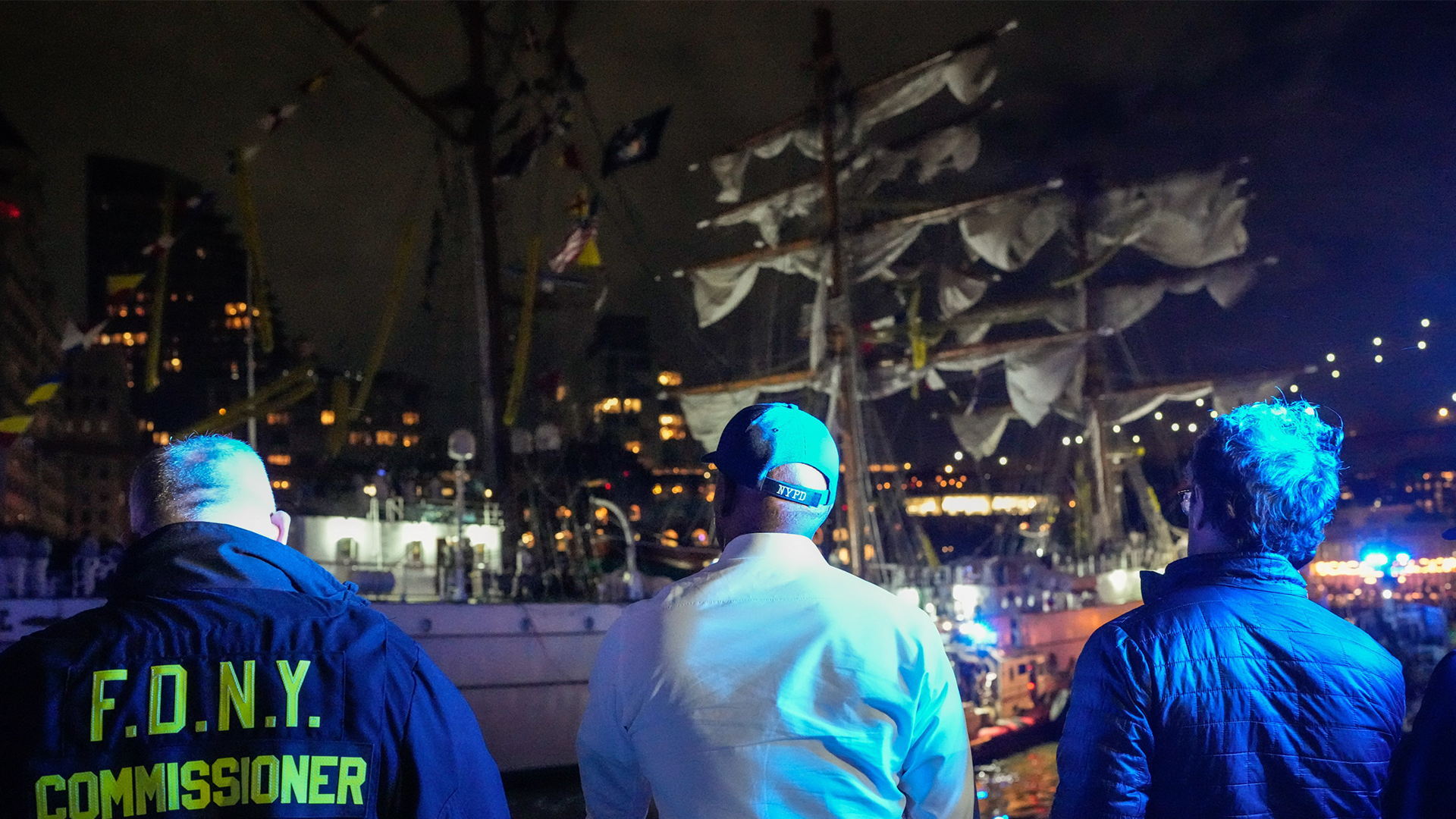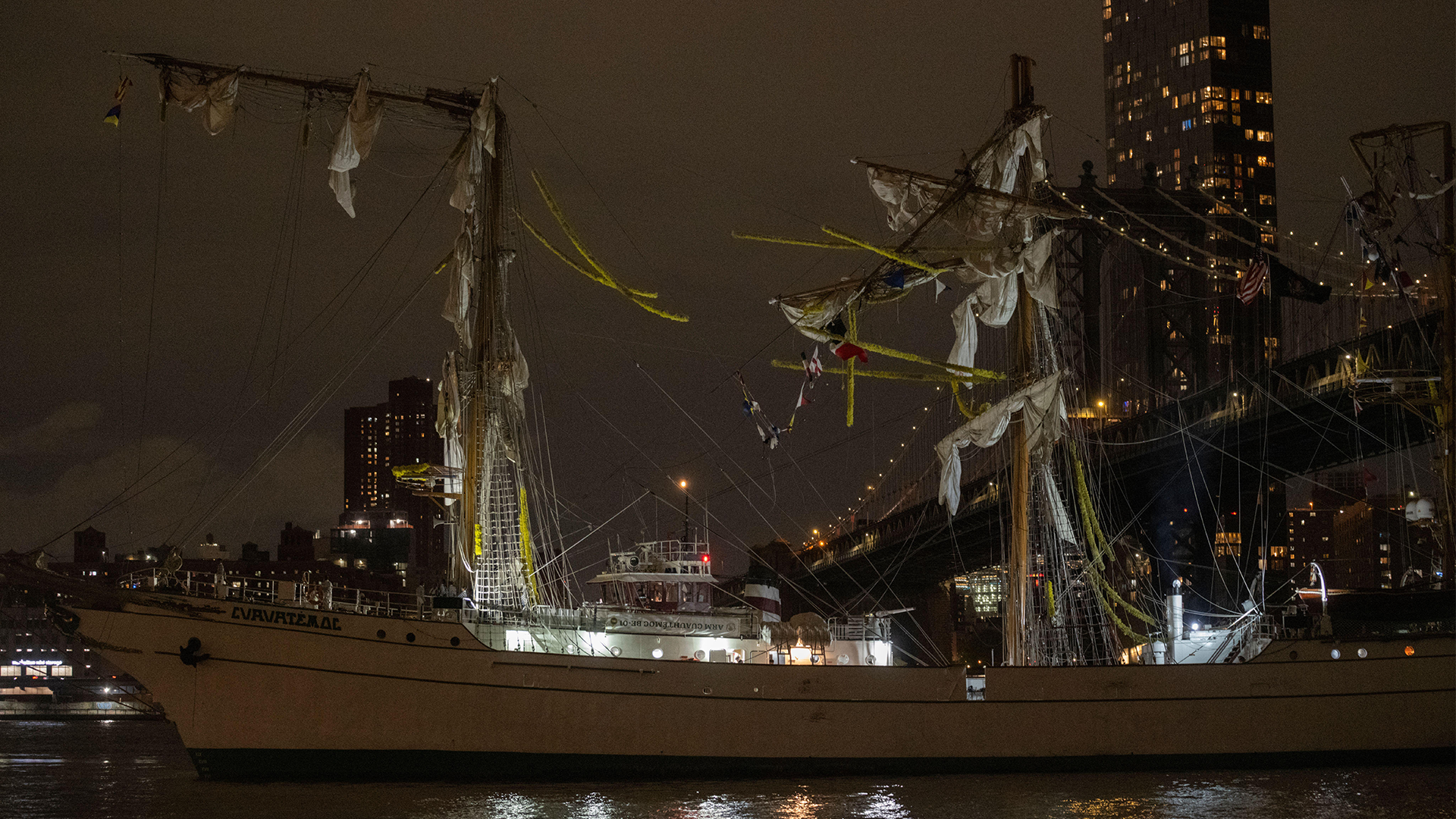
Mechanical failure, tradition and tragedy: How the Mexican navy ship crash unfolded

A Mexican Navy sail training ship struck the Brooklyn Bridge on Saturday night, killing a cadet and a Marine and injuring at least 19 others, according to officials.
The vessel, ARM Cuauhtémoc, had been preparing to leave New York after a scheduled port visit when it collided with the underside of the iconic bridge, snapping its 45m-tall masts.
Several crew members were standing on the masts as part of a traditional ceremonial display and were thrown off when they snapped on impact.
- Cheer ship: How a Royal Navy custom historically meant 'we come in peace'
- General Jenkins becoming First Sea Lord: Who cares what colour his uniform is?
- Royal Navy on ceremonial guard at Edinburgh Castle and Holyroodhouse for first time
Personnel killed while 'manning the yard'
Mexican President Claudia Sheinbaum confirmed that a female cadet and a male Marine died from their injuries following the incident.
Both had been standing high up in the rigging – a traditional naval gesture known as "manning the yards" – as the vessel left port.
Cadet América Yamileth Sánchez, 20, and Sailor Adal Jair Marcos, 22 died after the collision.
The Mexican Navy said 22 people were hurt in total, with 19 receiving hospital treatment. Two remained in critical condition as of Sunday afternoon, according to the NYPD.
Out of the 277 people on board, authorities said no one fell into the water during the collision and no diving rescue operations were needed.
How did it happen
An investigation is now underway to determine exactly what caused the crash, but early reports point to a mechanical failure.
According to Politico, the ship lost propulsion shortly after leaving the dock and began reversing uncontrollably.
Local currents and wind conditions may have made the situation worse.
A tugboat had been assisting the Cuauhtémoc, but may have disengaged too early. Investigators are now examining whether proper support procedures were followed.
The ship's masts struck the steel underside of the bridge at around 20:30 local time.
The US National Transportation Safety Board is working alongside the Mexican Navy to determine what went wrong.

Public visit turns to tragedy
The Cuauhtémoc had been docked at South Street Seaport for a public engagement event, with members of the public invited aboard.
The stop in New York was supposed to have been the third in the vessel's eight-month voyage around the world, spanning from Iceland to Jamaica.
Built in Spain in 1981, the ship is named after the last Aztec emperor.
Cuauhtémoc trains cadets and represents the country in international port visits and tall ship events.
"We had to leave almost 40% of the crew to take on more cadets," Lieutenant Sergeant Hugo Calvario, the ship's orthopedic surgeon told the New York Post, meaning that trainees had had to pick up more responsibilities.
Bridge reopened, ship detained
Despite the force of the impact, no structural damage was reported to the Brooklyn Bridge.
Traffic was temporarily halted in both directions but resumed after a city inspection.
The damaged vessel was later towed to a nearby dock, where it remains under investigation.
The Mexican government said consular staff and naval officials were providing support to the injured cadets.
Why the Royal Navy doesn't man the yards
In the past, all members of the crew who were not involved in steering the ship would line the yards (the rigging holding the sails) of a ship to display to the port that the ship came in peace.
The custom evolved into a traditional ceremony reserved for high-profile events or to honour distinguished guests.
While standing on the yards remains a tradition in some navies, the Royal Navy no longer carries out the practice.
Safety concerns and changes in ship design have led to modern ceremonial salutes being conducted from the deck instead.









